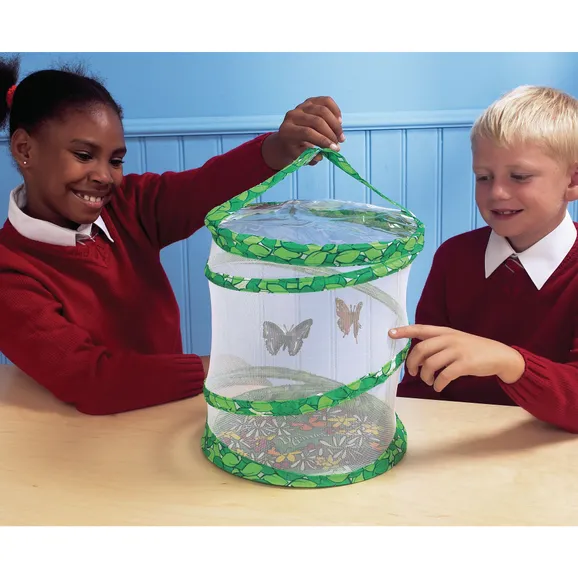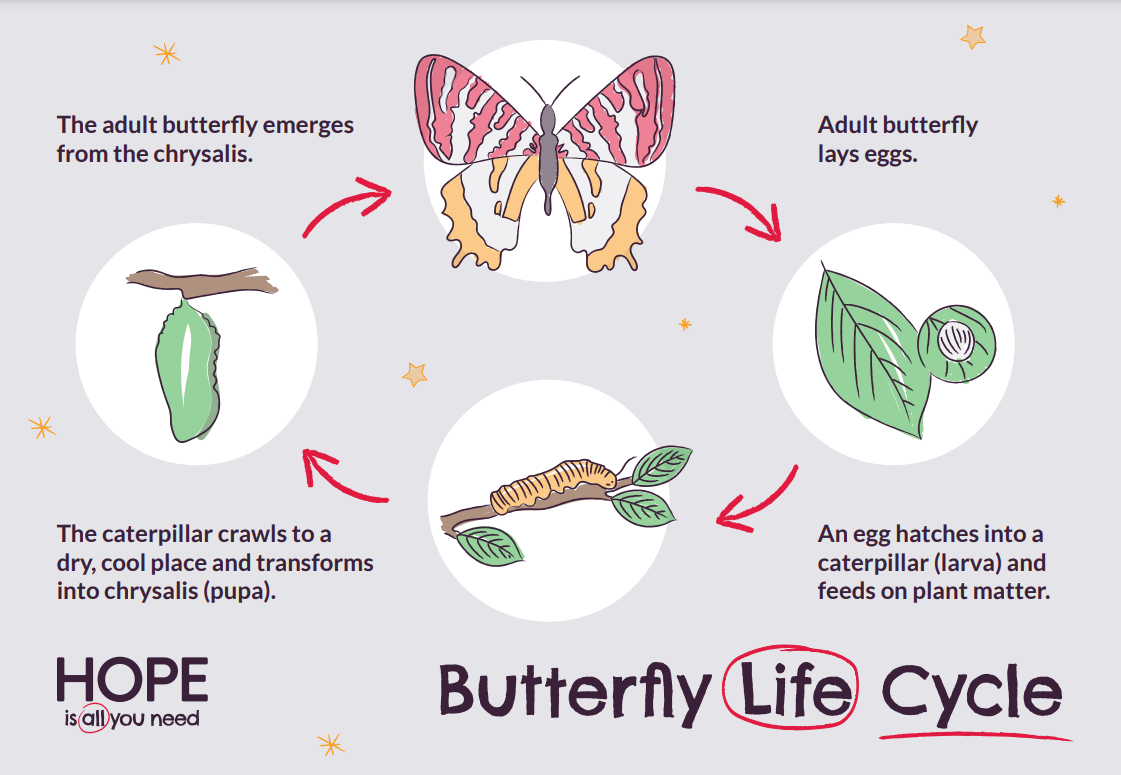The life cycle of a butterfly
The world of insects is filled with fascinating creatures, but one of the most enchanting is undoubtedly the butterfly. The transformation it undergoes from a tiny egg to a beautiful flying insect is a captivating process that never fails to amaze both children and adults alike. As primary school teachers, you have the privilege of introducing our young learners to the wonders of nature. So, why not explore the captivating life cycle of a butterfly?
Stage 1: The egg
The journey begins with a delicate and minuscule egg, usually laid on the underside of a leaf. These tiny eggs are often round or oval in shape and come in various colours, depending on the species. Each egg holds a potential butterfly, waiting to emerge. It’s fascinating to teach children how the mother butterfly carefully selects the perfect leaf to lay her eggs on, ensuring that when they hatch, the caterpillars will have a ready food source.
Stage 2: The caterpillar (larva)
From the egg emerges a hungry little caterpillar, also known as a larva. This is perhaps the most recognisable stage of a butterfly’s life cycle. Caterpillars come in different shapes, sizes, and colours. They have a voracious appetite, spending most of their time munching on leaves and growing rapidly. Encourage your pupils to observe and sketch these unique creatures, noting the patterns and details that make each caterpillar distinct.

Stage 3: The chrysalis (pupa)
After the caterpillar has eaten its fill, it’s time for a truly magical transformation. It forms a chrysalis or pupa around itself, often blending seamlessly with its surroundings. Inside the chrysalis, an incredible metamorphosis takes place. The caterpillar’s body undergoes remarkable changes, eventually reshaping into a completely different creature. This is an excellent opportunity to discuss the concept of change and transformation with your pupils. Learn more with our wildlife habitat posters.
Stage 4: The butterfly (adult)
Finally, after days or weeks of patiently waiting, the chrysalis starts to reveal the beauty within. The butterfly begins to emerge, struggling to free itself from the confining pupa. Once it breaks free, its wings are crumpled and damp. Over time, they expand and harden, revealing vibrant colours and intricate patterns. This is a truly awe-inspiring moment that demonstrates resilience and the rewards of patience. Encourage children to observe and learn about different butterfly species, highlighting their unique characteristics. Have a butterfly garden in your class so you and your class can see first-hand how butterflies grow.
Check out our free downloadable poster with a diagram of the life cycle of a butterfly. Share it with your pupils and teach them about the life cycle in class.
The life cycle of a butterfly is a captivating journey that offers countless opportunities for exploration and learning. By teaching our young pupils about this process, we help them develop an appreciation for the natural world and instil a sense of wonder. Through activities like observing caterpillars, caring for chrysalises, and releasing butterflies, we foster curiosity and empathy in children.
Celebrate World Environment Day on the 5th of June by learning about the life cycle of different species. Share with your class the importance of looking after the environment and learning about nature around us.
